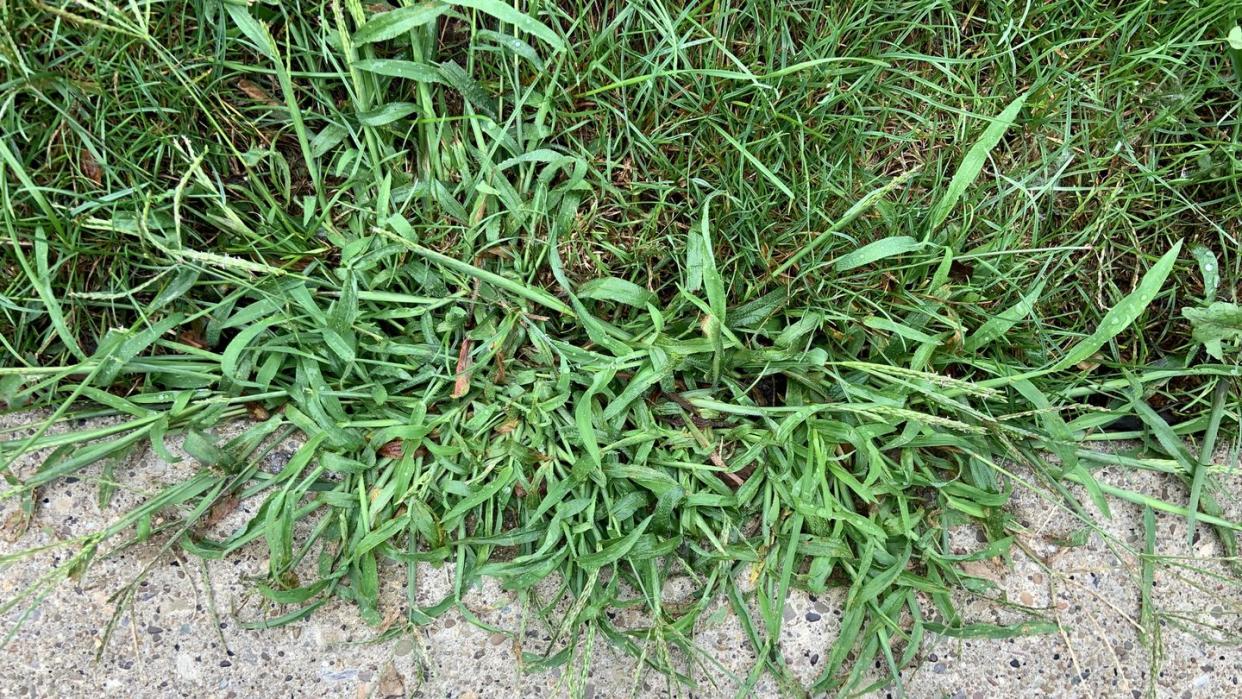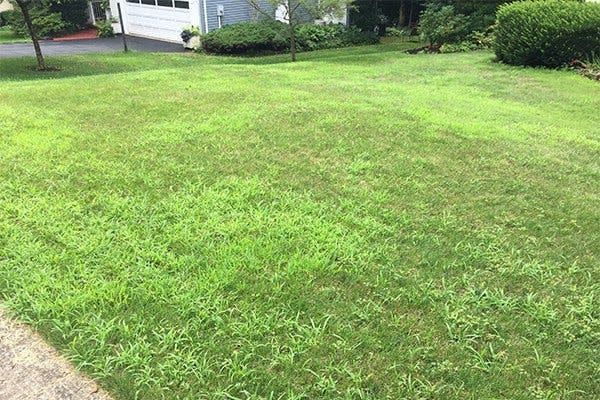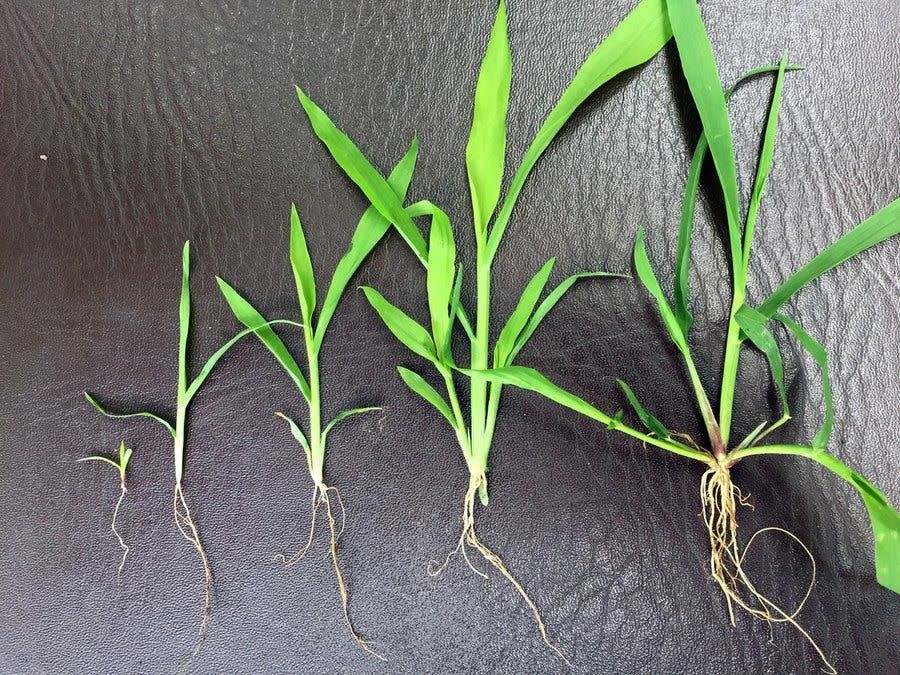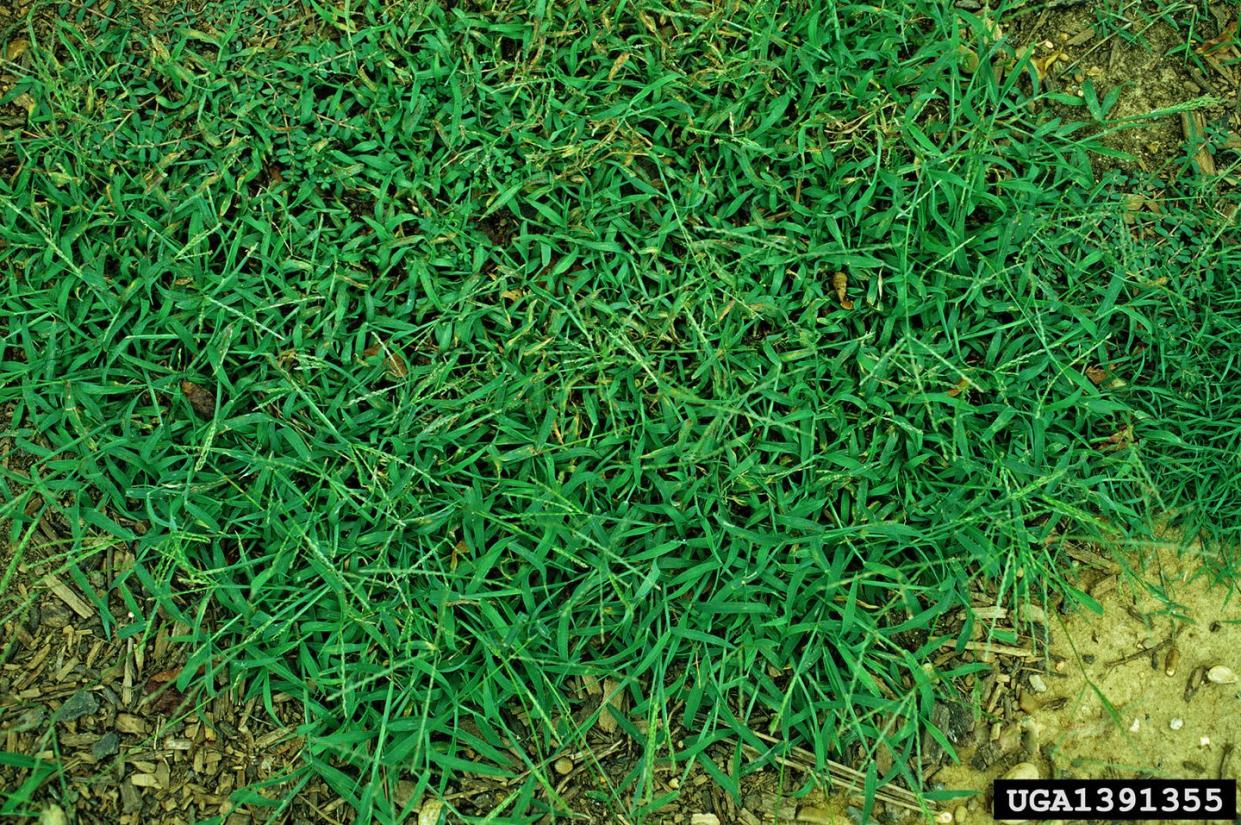How to Stop Crabgrass From Taking Over Your Lawn

"Hearst Magazines and Yahoo may earn commission or revenue on some items through these links."
Ready or not, here it comes! If you have a lawn of any size, chances are you’ll find crabgrass in it sooner or later. Crabgrass (Digitaria spp.) is a resilient weed that grows low to the ground with long stems, or tillers, radiating from the center of the plant, somewhat resembling the legs of a crab. Left unchecked, crabgrass can spread rapidly and crowd out your healthy grass.
If you’re a hands-off kind of gardener, you may be tempted to do nothing about crabgrass. That’s fine, but be aware that if you leave it alone, you’ll likely have a whole lot more crabgrass next year. Plus, the seeds remain viable for years, so even if they don’t sprout one season, they can hang around until conditions are right for germination, Peter Landschoot, PhD, professor of turfgrass science at Penn State University, says.
We reached out to Landschoot and Clint Waltz, PhD, turfgrass extension specialist at the University of Georgia, to learn how to get rid of crabgrass, no matter where you live. Read on to get all the details you need to keep your lawn thick, healthy, and weed free.

What Is Crabgrass?
There are many different species of crabgrass, but control is about the same regardless of the type. “Crabgrass is a summer annual grassy weed that has a different texture and color than desirable grasses, so it affects the aesthetics of your lawn,” Waltz explains. “From a biological standpoint, it competes with the grasses you do want for light, water, space and nutrients.”
Because crabgrass is an annual weed that lives for only one season, it works hard to make sure it can reproduce itself next year. “Crabgrass staggers its germination period over a period of time in the spring,” Landschoot says. “Each crabgrass plant deposits hundreds of seeds with the potential to become new plants next year.”
When Does Crabgrass Germinate?
Crabgrass loves the heat, so it doesn’t start popping up until soil surfaces warm up. When soil temperatures remain around 55 degrees for a few days, baby crabgrass plants start appearing. Depending on where you live, that can be anytime from mid March to late April or early May, Waltz says. New crabgrass can keep germinating until early June.

How to Kill Crabgrass
Before Crabgrass Grows
Your best bet is to stop crabgrass before it starts. “Crabgrass is easily controlled using a pre-emergent herbicide,” Waltz says. “You must apply it prior to weed seed germination, but germination is required for it to work.” That’s because the seedlings must absorb the herbicide through their roots to then die.
You should apply pre-emergent herbicide when air and soil temperatures are nearing 55 degrees. You can use a soil temperature map to get a better idea of when to apply the product in your region, but it’s typically around the time forsythia shrubs are blooming in your area.
Pre-emergent products work by creating a residual barrier on the soil surface. “The product is broken down and consumed by the soil microorganisms and typically lasts for several months,” Landschoot explains.
There are many different products you can use. Pre-emergent active ingredients often include:
Dithiopyr
Pendimethalin
Prodiamine
After Crabgrass Grows
Pre-emergent herbicides won’t kill crabgrass that has already sprouted. If you didn’t get pre-emergent down at the optimal time, you can dig up baby crabgrass plants by hand when they have only two to three leaves and before they produce seeds, Landschoot says. Or you can use a post-emergent herbicide to spray individual plants. Post-emergent herbicides include active ingredients such as:
Quinclorac
Fenoxaprop-p-ethyl
If left intact, crabgrass plants will get huge, with up to 11 to 12 tillers by midsummer. These mature plants will be much more difficult to control with herbicide.
One more important fact: Know what kind of grass is the predominant species in your yard because not all post-emergent products work well on all grass types, Waltz says. Also, some types of herbicides can damage some types of grasses. Your local university coop extension service (use this extension finder to locate yours) can help you identify your grass type before you start spraying and inadvertently kill your lawn, too.
Finally, don’t waste your time with homemade weedkiller products such as DIY vinegar weed killer. It affects only the surface foliage and doesn’t kill the roots, so the weed will green up again in about 10 days, Waltz says. It also can harm some types of beneficial insects and is non-selective, so it also kills desirable grasses.
Can You Plant Grass After Using Pre-Emergent Herbicide?
Nope! “The pre-emerge doesn’t know any difference between the grass seed and the weed seed,” Waltz says. If you use a pre-emergent herbicide, you’ll need to wait to plant grass seed until 60 days after application. To lay down sod, wait 75 days.

How to Prevent Crabgrass
Certain lawns are more likely to get crabgrass, including those in full sun, areas where the soil has been compacted by heavy traffic, and in lawns that are sparse. “That’s really true of all weeds,” Landschoot says. “If the plant has space to grow, crabgrass can get huge and shade out the desirable grass.”
To keep your lawn its healthiest and to maintain dense turf, follow these tips from Waltz and Landschoot:
Mow regularly and at the proper height for your type of grass. One size doesn’t fit all. For example, the ideal mowing height for zoysia is between 1 to 2.5 inches, while Kentucky blue is between 2.5 and 3.5 inches.
Water deeply and infrequently. Frequent, light watering encourages weeds to pop up and turf to form shallow roots.
Watch for diseases and pests. If anything weird pops up, consult your local coop extension service for identification help and management recommendations. Although some conditions don’t need to be treated (like mushrooms in your lawn), others (armyworms) need attention ASAP. It’s always smart to be proactive!
Follow House Beautiful on Instagram and TikTok.
You Might Also Like
